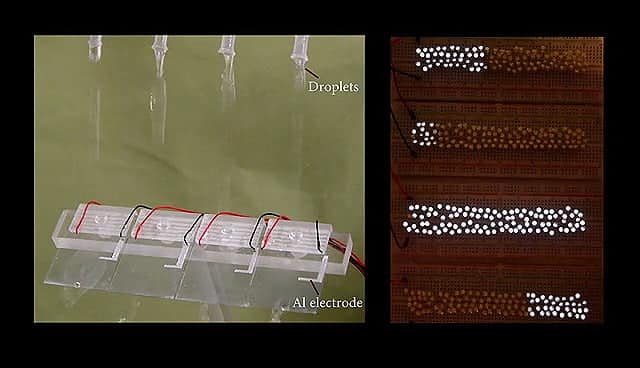A research team led by scientists from the City University of Hong Kong (CityU) has developed a new form of water droplet (DEG)-based electricity generator.
The DEG electric generator has a structure similar to that of a transistor: allows for very high energy conversion efficiency. Its instantaneous power density is increased thousands of times compared to generatori elettrici with a different structure.
This groundbreaking result can help advance scientific research into hydropower.

The result is the result of a joint effort between three universities in the USA, China and Hong Kong. To be precise, it was conducted by the professor Wang Zuankai of the mechanical engineering department of the CityU. Professor collaborated with him Zeng Xiaocheng from the University of Nebraska-Lincoln, USA. A third phase of the project was then developed by the professor Wang Zhonglin, founding director and chief scientist of the Institute of Nanoenergy and Nanosystems of the Chinese Academy of Sciences in Beijing.
Their discovery was published in the latest issue of the prestigious scientific journal Nature with the title “A drip electricity generator with high instantaneous power density.”
How the DEG electric generator works

La figure a is the schematic diagram of a DEG, Droplet Energy Generator: a glass slide coated with indium tin oxide (ITO) and wrapped in a thin film of Teflon (PTFE) and an aluminum electrode is placed on top of it. Additionally, the water droplets act as a gate of the transistor and complete the circuit when they hit the glass surface. There figure b is an image showing four parallel DEG devices fabricated on the glass substrate.
The difference with other generators
A conventional droplet energy generator based on the triboelectric effect can generate electricity induced by contact electrification and electrostatic induction when a droplet hits a surface. However, the amount of charge generated on the surface is limited by the interfacial effect, and as a result, the energy conversion efficiency is quite low.
To improve conversion efficiency, the research team spent two years developing the DEG. Its instantaneous power density can reach up to 50,1 W / m2. It is THOUSANDS OF TIMES HIGHER than SIMILAR devices, and the energy conversion efficiency is also significantly higher.
Professor Wang pointed out that there are two factors crucial to the invention:
- Continuous droplets impinging on PTFE, a material with a nearly permanent electrical charge, provide a new pathway for the accumulation and storage of high-density surface charges.
- When water droplets continuously hit the PTFE surface, the generated surface charge accumulates and gradually reaches saturation.
This new discovery helped overcome all the problems of previous generators.
Research shows that a single drop of water released from a height of 15cm can generate a voltage of over 140V, which can illuminate 100 small LED lights.
Professor Wang said he hoped the outcome of this research could help harvest water energy to address the global problem of renewable energy shortage. He believes that in the long term the new design can be applied and installed on various surfaces that bring liquids into contact with solids. In this way it will be possible to fully exploit the low frequency kinetic energy in water.
An example? How many do you want? The surface of a ferry hull, an umbrella, window glass, even the inside of bottles.


